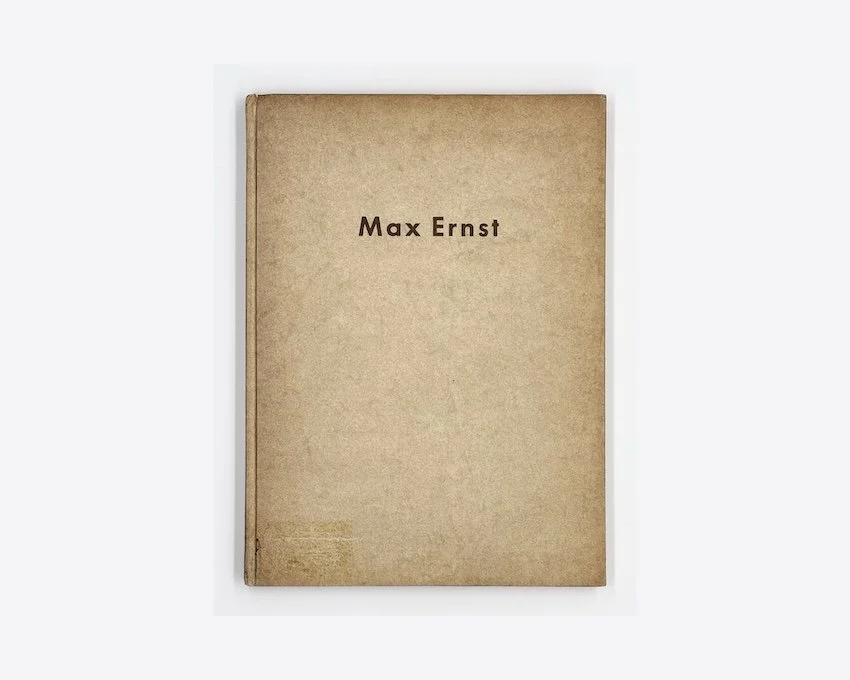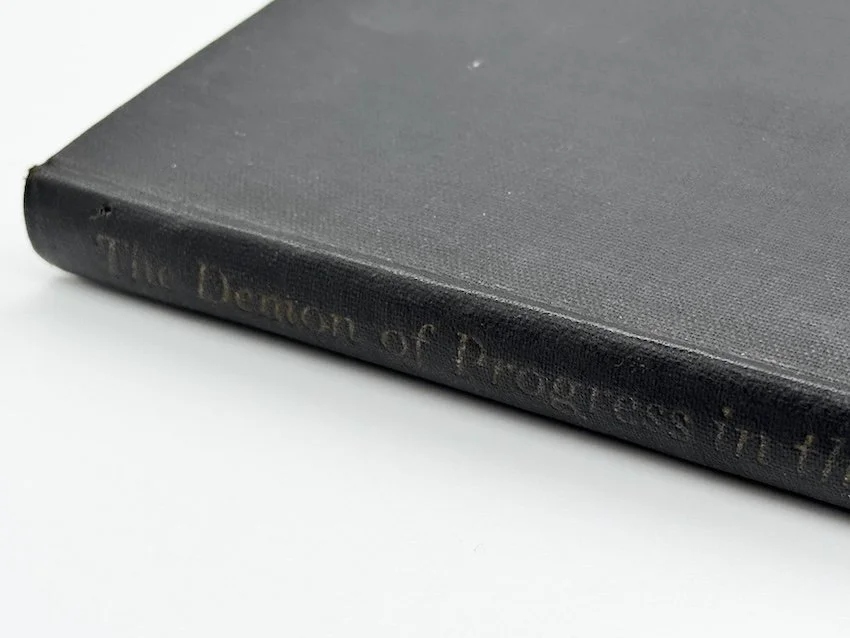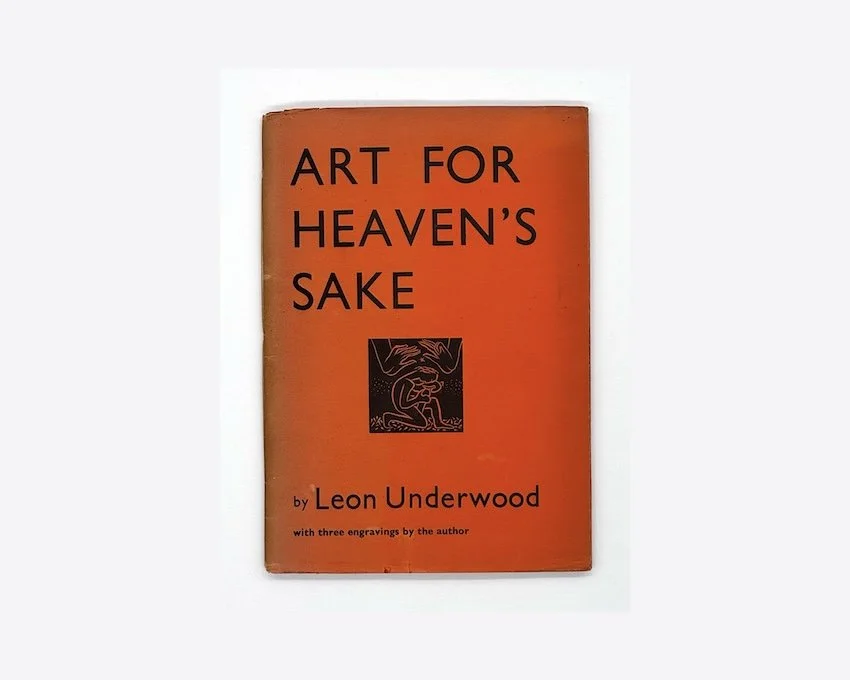 Image 1 of 2
Image 1 of 2

 Image 2 of 2
Image 2 of 2



The Asian Music Circle presents Shrimata Shanta Rao, June 1955
Title: Asian Music Circle presents Shrimata Shanta Rao
Author: a message from Yehudi Menhuin the President of the Asian Music Circle
Publisher: The Asian Music Circle
Publication Date: 1955
Format: stapled softcover
Condition: Near Fine
Stock Number: RB03746
Program for a performance by acclaimed Indian dancer Shrimata Shanta Rao (c.1925-2007) performed at the Fortune Theatre, Drury Lane, London, Friday , 10th June, 1955 at 8:15pm, arranged by The Asian Music Circle. Includes “A message from The President” Yehudi Menhuin, and “Notes on Sangeeta” by Ayana Deva Angadi, Chairman of the Asian Music Circle.
The Asian Music Circle was an organisation founded in London, England, in 1946, that promoted Indian and other Asian styles of music, dance and culture in the West. The AMC is credited with having facilitated the assimilation of the Indian subcontinent's artistic traditions into mainstream British culture. Founded by Indian writer and former political activist Ayana Angadi and his English wife, Patricia Fell-Clarke, a painter and later a novelist, the organisation was run from their family home in the north London suburb of Finchley.
In the 1950s, with Yehudi Menuhin as its president, the AMC organised the first Western performances by Indian classical musicians Ravi Shankar and Ali Akbar Khan, as well as Vilayat Khan's debut concerts in Britain. During the following decade, the Angadis introduced George Harrison of the Beatles to Shankar, initiating an association that saw Indian music reach its peak in international popularity over 1966–68. The Music Circle had its own London-based musicians, some of whom played on Harrison's Indian-style compositions for the Beatles, including "Within You Without You" from the album Sgt. Pepper's Lonely Hearts Club Band.
The AMC is recognised as having introduced yoga into Britain, through the Angadis' hosting of classes by visiting guru B.K.S. Iyengar. The organisation had ceased operation by 1970, when Ayana and Patricia Angadi separated.
Born c.1925 in Bombay, Shanta Rao, was an eminent Indian dancer, and master of the art forms of Kathakali, Bharatanatyam, and Kuchipudi. She was honoured with prestigious awards such as the Padma Shri, Sangeet Natak Akademi Award, and Kalidas Samman in recognition of her contributions to Classical Dance.
“Shanta Rao was born around 1925 to Saraswat Brahmins, who were an honourable family in Bombay.[clarification needed] She wished to pursue Kathakali but faced opposition at an early age. Eventually, she went on to develop a passion for classical traditions away from an urban setup. She rejected the ideology of mainstream schooling to pursue dance. Rao traveled to Kerala Kalamandalam with a chaperone, G. Venkatachalam, in the year 1939. The proprietor of Kerala Kalamandalam was a poet named Vallathol Narayan Menon.
P. Ravunni Menon, a Guru from Kalamandalam, was taken by surprise at the sight of a young girl wanting to participate in a masculine art form like Kathakali. Shanta Rao was one of the first female pioneers of Kathakali who challenged the traditional norms of classical dance. In the Kalamandalam, Shanta had the opportunity to meet the last great Guru of Mohini Attam, Krishna Panikkar, who eventually endowed his legacy of movements and music. She made her debut in Kathakali in 1940 in front of an audience of Namboodiris and Kathakali experts in Thrissur.
Shanta Rao learnt Bharatanatyam from Meenakshi Sundaram Pillai. She made her debut in Bharatnatyam in the Music Academy of Madras in 1942. Rao explored the dance form Kuchipudi under Vempati Chinna Satyam when she was believed to be in her 50s. She formulated Bhama Natyam, inspired and influenced by Venkatachalapathi Sastri, who introduced her to Bhamasutram rituals. Sastri entrusted and blessed her with the sanctity of the art.” – Wikipedia
Title: Asian Music Circle presents Shrimata Shanta Rao
Author: a message from Yehudi Menhuin the President of the Asian Music Circle
Publisher: The Asian Music Circle
Publication Date: 1955
Format: stapled softcover
Condition: Near Fine
Stock Number: RB03746
Program for a performance by acclaimed Indian dancer Shrimata Shanta Rao (c.1925-2007) performed at the Fortune Theatre, Drury Lane, London, Friday , 10th June, 1955 at 8:15pm, arranged by The Asian Music Circle. Includes “A message from The President” Yehudi Menhuin, and “Notes on Sangeeta” by Ayana Deva Angadi, Chairman of the Asian Music Circle.
The Asian Music Circle was an organisation founded in London, England, in 1946, that promoted Indian and other Asian styles of music, dance and culture in the West. The AMC is credited with having facilitated the assimilation of the Indian subcontinent's artistic traditions into mainstream British culture. Founded by Indian writer and former political activist Ayana Angadi and his English wife, Patricia Fell-Clarke, a painter and later a novelist, the organisation was run from their family home in the north London suburb of Finchley.
In the 1950s, with Yehudi Menuhin as its president, the AMC organised the first Western performances by Indian classical musicians Ravi Shankar and Ali Akbar Khan, as well as Vilayat Khan's debut concerts in Britain. During the following decade, the Angadis introduced George Harrison of the Beatles to Shankar, initiating an association that saw Indian music reach its peak in international popularity over 1966–68. The Music Circle had its own London-based musicians, some of whom played on Harrison's Indian-style compositions for the Beatles, including "Within You Without You" from the album Sgt. Pepper's Lonely Hearts Club Band.
The AMC is recognised as having introduced yoga into Britain, through the Angadis' hosting of classes by visiting guru B.K.S. Iyengar. The organisation had ceased operation by 1970, when Ayana and Patricia Angadi separated.
Born c.1925 in Bombay, Shanta Rao, was an eminent Indian dancer, and master of the art forms of Kathakali, Bharatanatyam, and Kuchipudi. She was honoured with prestigious awards such as the Padma Shri, Sangeet Natak Akademi Award, and Kalidas Samman in recognition of her contributions to Classical Dance.
“Shanta Rao was born around 1925 to Saraswat Brahmins, who were an honourable family in Bombay.[clarification needed] She wished to pursue Kathakali but faced opposition at an early age. Eventually, she went on to develop a passion for classical traditions away from an urban setup. She rejected the ideology of mainstream schooling to pursue dance. Rao traveled to Kerala Kalamandalam with a chaperone, G. Venkatachalam, in the year 1939. The proprietor of Kerala Kalamandalam was a poet named Vallathol Narayan Menon.
P. Ravunni Menon, a Guru from Kalamandalam, was taken by surprise at the sight of a young girl wanting to participate in a masculine art form like Kathakali. Shanta Rao was one of the first female pioneers of Kathakali who challenged the traditional norms of classical dance. In the Kalamandalam, Shanta had the opportunity to meet the last great Guru of Mohini Attam, Krishna Panikkar, who eventually endowed his legacy of movements and music. She made her debut in Kathakali in 1940 in front of an audience of Namboodiris and Kathakali experts in Thrissur.
Shanta Rao learnt Bharatanatyam from Meenakshi Sundaram Pillai. She made her debut in Bharatnatyam in the Music Academy of Madras in 1942. Rao explored the dance form Kuchipudi under Vempati Chinna Satyam when she was believed to be in her 50s. She formulated Bhama Natyam, inspired and influenced by Venkatachalapathi Sastri, who introduced her to Bhamasutram rituals. Sastri entrusted and blessed her with the sanctity of the art.” – Wikipedia

























